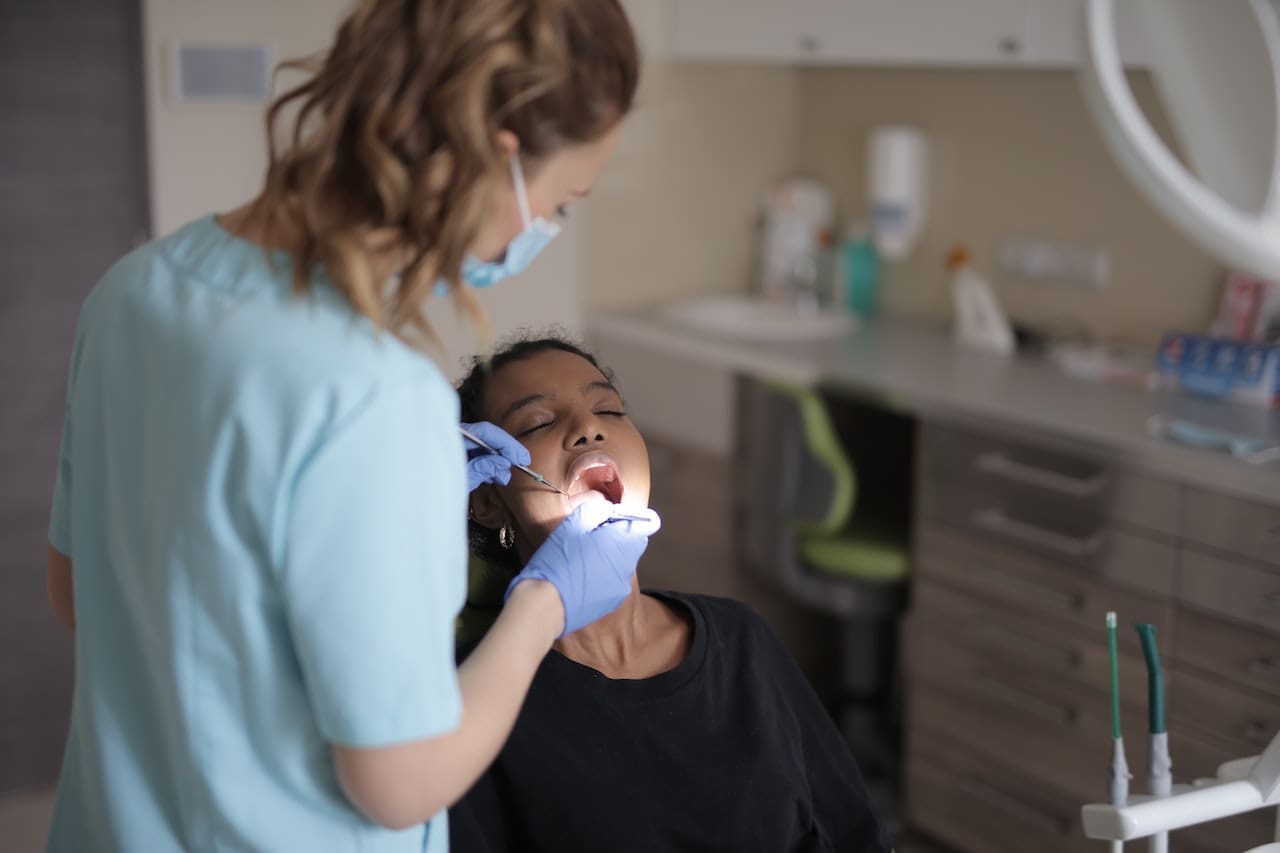Lip and tongue ties are common oral conditions that can create functional challenges and negatively impact speech, feeding, and dental health. If left untreated, these issues can persist into adulthood, causing long-term discomfort.
At Lexington Smile Studio, Dr. Fawn Rosenberg and her dedicated dental team are committed to offering the most advanced and effective solutions for lip and tongue tie releases, ensuring optimal oral function for patients of all ages. One such innovative approach is the use of a CO2 laser, a minimally invasive and precise method to correct lip and tongue ties with lasting results.
The CO2 laser release is a state-of-the-art alternative to traditional frenectomy procedures, allowing for increased accuracy and reduced discomfort during lip and tongue tie treatments. This advanced technology offers numerous benefits, including less swelling and bleeding, reduced risk of infection, and minimized post-operative pain. Using the CO2 laser, Dr. Rosenberg can skillfully release the restrictive frenulum, the connective tissue causing the lip or tongue tie, in a gentle and efficient manner.
In this comprehensive blog, we will examine the nature of lip and tongue ties, explore the advantages of CO2 laser release, and guide you through the treatment process at Lexington Smile Studio. With the knowledge gained in these sections, you’ll be better equipped to make a well-informed decision about addressing lip and tongue ties in yourself or your loved ones, ensuring optimal oral health and function for a lifetime.
Understanding Lip and Tongue Ties: The Impact on Oral Function
Lip and tongue ties are congenital oral conditions affecting the frenum, a thin band of connective tissue found under the tongue and inside the upper lip. When this tissue is too short or thick, it can restrict the movements of the tongue or lip, leading to functional challenges such as:
1. Feeding Difficulties: Infants with tongue ties may struggle to latch, breastfeed effectively, or develop colic and reflux issues. These difficulties can impact their growth and cause distress to both the baby and parents.
2. Speech Problems: As children with tongue and lip ties grow older, they may encounter speech difficulties due to limited tongue and lip mobility, often affecting articulation and pronunciation.
3. Dental Health Issues: A restricted tongue can make it challenging to keep teeth clean and may contribute to the development of decay, gum disease, or tooth crowding.
4. Difficulty with Daily Oral Functions: In more severe cases, a lip or tongue tie can make simple tasks, such as eating, drinking, and even kissing, problematic for individuals.
CO2 Laser Release: The Advantages of a Minimally Invasive Approach
The CO2 laser release technique provides many advantages over traditional surgical options like scissors or scalpel frenectomies. Some of these benefits include:
1. Precision: The CO2 laser is incredibly precise, allowing for accurate tissue removal and promoting better overall outcomes for patients.
2. Reduced Bleeding: The laser cauterizes blood vessels as it works, minimizing bleeding and the need for sutures in most cases.
3. Less Pain and Discomfort: CO2 laser release generally results in less discomfort during and after the procedure. This is due to the laser’s ability to minimize inflammation and swelling.
4. Lower Risk of Infection: The CO2 laser has sterilizing properties, which can help to reduce the risk of postoperative infection.
5. Faster Recovery: With less pain and swelling, recovery times are generally shorter, allowing patients to return to their normal activities more quickly.
The CO2 Laser Release Process at Lexington Smile Studio
To guide patients through the CO2 laser release journey, it’s essential to understand the treatment process step by step:
1. Assessment and Diagnosis: At Lexington Smile Studio, Dr. Rosenberg will first evaluate the nature and severity of the lip or tongue tie, determining if a CO2 laser release is the appropriate course of action.
2. Preparing for the Procedure: Depending on the age and comfort level of the patient, the procedure may be done with a topical anesthetic, local anesthetic, or under sedation. Your dental professional will discuss the best option to ensure the patient’s comfort.
3. Performing the CO2 Laser Release: During the procedure, Dr. Rosenberg uses the laser’s precise and focused energy to release the restrictive frenulum. The entire process typically takes just a few minutes, with minimal discomfort.
4. Post-Treatment Care: Although the recovery process is generally faster and less painful with CO2 laser release, some aftercare measures will help ensure optimal healing. This may include gentle stretching exercises and basic oral hygiene practices to prevent reattachment.
Candidacy and Considerations for CO2 Laser Release
While the CO2 laser release is an effective treatment option for patients of all ages dealing with lip and tongue ties, it is essential to consult with a dental professional to determine if this treatment is appropriate for your specific case. During an initial assessment, Dr. Rosenberg will carefully evaluate the severity of the lip or tongue tie, discuss potential treatment options, and develop a personalized plan to address the patient’s unique needs.
Final Thoughts
CO2 laser release offers a minimally invasive, precise, and effective solution for addressing lip and tongue ties in patients of all ages, improving their quality of life and oral function. By understanding the advantages and treatment process associated with this advanced technology, individuals and families can make informed decisions regarding their oral health care journey.
At Lexington Smile Studio, Dr. Fawn Rosenberg and her team are dedicated to providing comprehensive and compassionate dental care, utilizing state-of-the-art techniques and technologies. If you or your loved one are struggling with the challenges presented by lip or tongue ties, contact Lexington Smile Studio to schedule an assessment and explore the transformative potential of CO2 laser for tongue-tie!






